A Highlands fling on the North Coast 500
The North Coast 500 travels through some of the most stunning scenery anywhere in the UK. Andrew Ditton follows a 'virtual' three-week tour of the popular route through the Scottish Highlands.
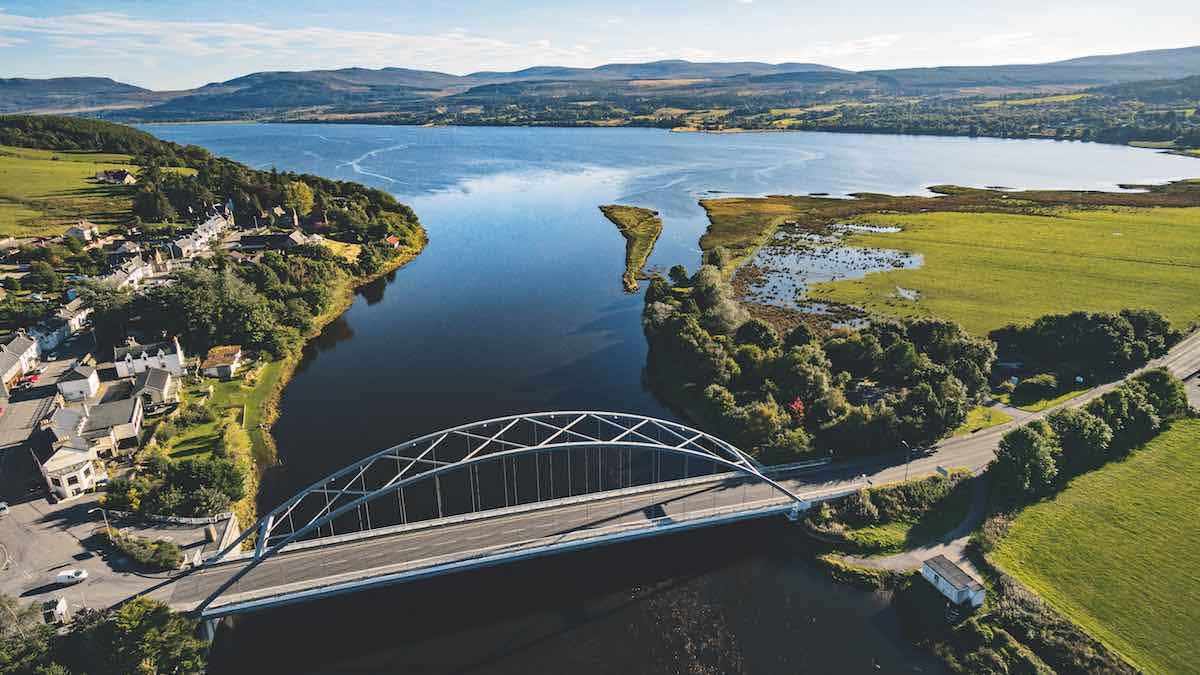
VisitScotland/RichardElliott
A circular route of 516 miles, the North Coast 500 loops around the north of Scotland, taking in the most stunning scenery. The Club has sites dotted close to the route and we suggest a slow and relaxed three-week tour, if you can, with two or three nights at each of the sites. However, such is the beauty of the region, you might wish to stay longer!
Sadly, the lockdown of early 2021 sees me writing this from the comfort of my own home, drawing on experiences of previous years. Allow me to take you on a ‘virtual’ journey, in the hope that we will soon be able to do it for real.
We start in Inverness, the ‘Gateway to the Highlands’. A few miles out of town you’ll find the popular Culloden Moor Club site, offering a full facility block and great views. Motorhomers in particular like to take advantage of the half-hourly bus service into the city; dog owners and ramblers delight in the forest next door.
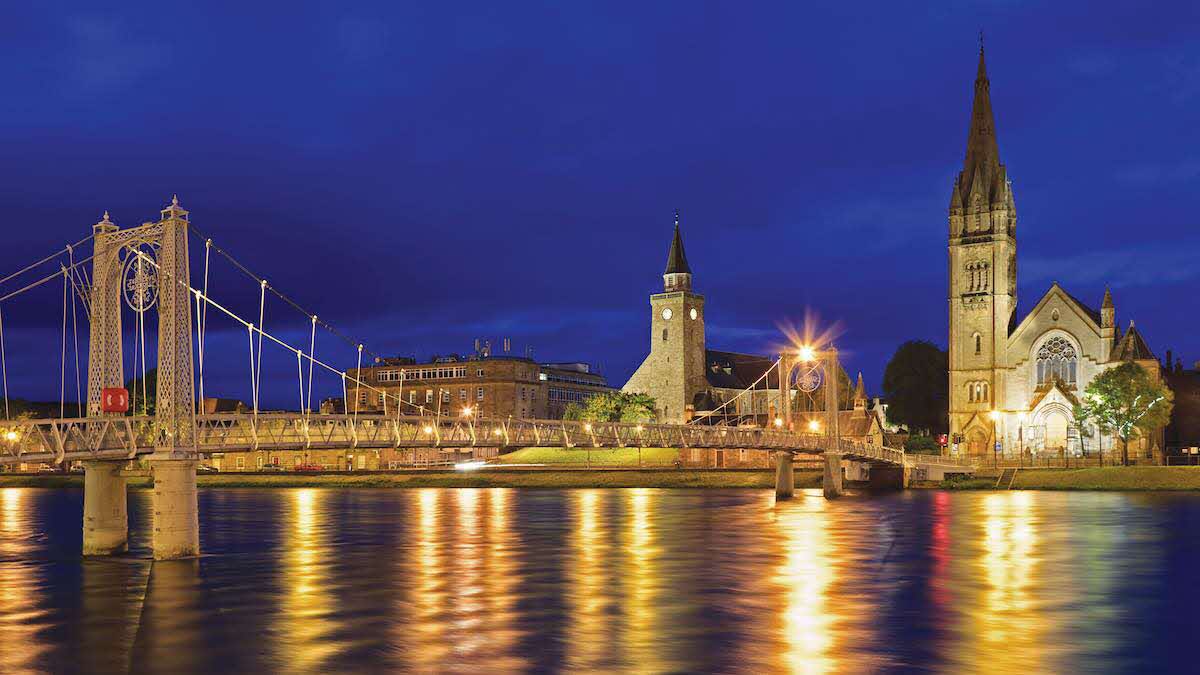
EfrainPadro/Alamy
To kick off the history trail, we head a couple of miles down the road to Culloden Battlefield, where the final conflict of the 1745 Jacobite rising took place. In addition to the vast and open battlefield, you’ll find a visitor centre hosting an interactive exhibition which details the intense battle and the circumstances surrounding the event. It does a very good job of smashing a few misconceptions with proven facts.
After learning about the fierce, bloody fighting, a trip to the Inverness Botanic Gardens will calm the nerves and soothe the soul. It’s free to enter although a voluntary donation is encouraged. In the UK’s most northerly botanic garden you’ll discover a satisfying combination of tropical plants in the hot house, succulents in the cactus house, and native outdoor plants.
Stay another day to visit the organic Black Isle Brewery, a few miles north of the city. Scotland may be famous for whisky, but the tipples here are ‘up there’ on the craft beer scale.
Heading clockwise as we roughly trace the NC500 route, be prepared for the most jaw-dropping drive to Kinlochewe Club site. You’ll be glad to spend a few nights at each site on this trip in order to process the surrounding natural beauty but the vistas on each stage of your actual journey are just as impressive.
Kinlochewe is a relaxed, primarily hardstanding site, which is softened by the lushness of its blooms and plants. Be sure to take in the scenic drive to the Applecross Peninsula with its incredible views over the water to the islands of Raasay and Skye. If you’re feeling brave you can always drive over the ‘Bealach na Ba’ mountain pass — but this is definitely not recommended in a large motorhome or with a caravan!
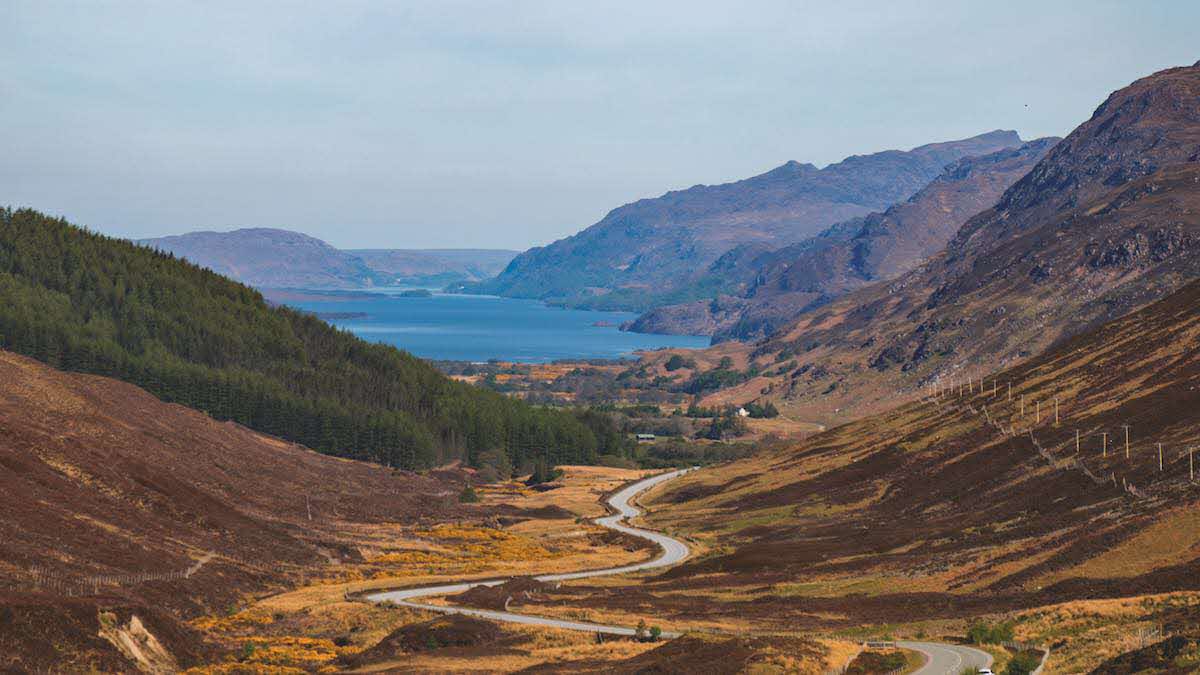 Photo of The Bealach na Bà mountain pass by Graham Lewin
Photo of The Bealach na Bà mountain pass by Graham Lewin
It’s an even better idea to immerse yourself in this landscape using your own two feet. Kinlochewe sits on the perimeter of the Beinn Eighe National Nature Reserve (NNR), the oldest of its kind in the UK. It was established in 1951 and covers 48 square kilometres, encompassing such celebrities as Loch Maree and Glen Torridon. If you don’t know where to start, don’t worry – a mile from the site lies the Beinn Eighe NNR Visitor Centre, where maps and guides are on hand to help you plan your activities.
Two eminently achievable strolls depart from the centre itself, but for something a little longer and more rugged you might need to drive a couple of miles up the road to the trails car park at Loch Maree. With any luck you’ll catch sight of a red deer, sea eagle, or even a golden eagle.
For a history fix, a trip to Gairloch Museum is highly recommended. Set in a former military bunker and opened in July 2019, this delightful museum was a joint winner of the Art Fund Museum of the Year award in 2020.
Suitably refreshed and recharged, it’s time to spend another day heading around the coast to Tongue via Durness; then it’s a 10-mile diversion to the next Club site on the itinerary, Altnaharra. Enjoying a breathtaking location on the banks of Loch Naver, there are just 24 pitches at this non-facility site, and almost half of those are economy pitches without EHU. Make sure you arrive well-stocked as it’s 25 miles to the nearest shop. Fortunately, The Crask Inn serves food (book ahead for dinner), and is ‘only’ 12 miles away.
Walking and relaxing are the order of the day at Altnaharra – the lack of mobile phone signal and wi-fi makes sure of that. It’s here that the history trail takes a turn towards the darker side. A drive up to Bettyhill will lead you to the fascinating Strathnaver Museum. As a scholar of Gaelic, the highlight of my visit was learning about the unusual dialect of Gàidhlig Dùthaich MhicAoidh (MacKay Country Gaelic). However, the overriding theme of the museum is the Highland Clearances, and the effect this had on people and landscape. On your way back to Altnaharra, stop off at the Rosal Clearance Village, where a series of interpretation boards tell the tragic story of this once vibrant village, where the remains of 70 buildings still stand.

Photo of Loch Naver and Ben Klibreck by Eric Ness
Our tour continues in a clockwise direction to Dunnet Bay Club site, a few miles from Thurso in Scotland’s north-east. This popular seaside site offers direct access to a sandy beach, while striking sea views may be enjoyed from many of the all-grass pitches. There’s an amenity block and shops within a short drive, so it’s a good place to catch up with the laundry and the shopping. A short walk away, the Northern Sands Hotel offers evening meals, which are rated highly by members.
A visit to the Castle of Mey is a must. The Queen Mother bought the castle in 1952, and oversaw renovation of the building and gardens. Her Majesty went on to use the castle as a holiday residence in the summer and autumn. Nowadays, it is open to visitors and the tour is highly recommended – some of the anecdotes are hilarious.
Naturally, you can’t leave the area without a trip to John o’ Groats and a snapshot next to the famous signpost. Beyond the tourism, you’ll find a smart and contemporary village bursting with style and chic design.
For an experience a little more dramatic, head east from John o’ Groats to Duncansby Head. Leave the car in the car park by the lighthouse and head south on foot for a few hundred yards. Take your camera, as you will quickly discover the remarkable view of Thirle Door and the Stacks of Duncansby — beautiful and dramatic rock formations whose appearance and alignment change with every step you take. If you wish to get even closer to the stacks and to the wildlife of the area, boat tours from John o’ Groats operate during the summer months.
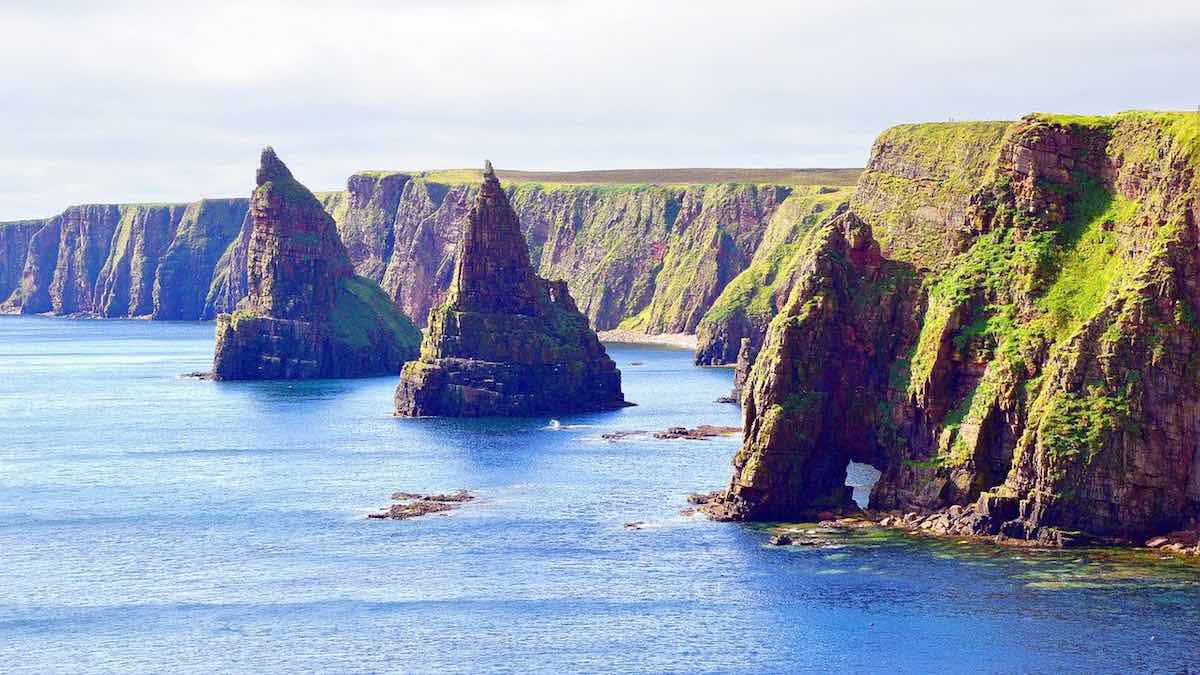
Heading south our route takes us through the village of Helmsdale and on to Brora Club site. Brora is something special; it borders a golf course next to an expansive sandy beach. The light quality here, and the big skies, are amazing. You have an amenity block and a choice of hardstanding or grass pitches, while a gate opens to a path across the golf course to the sea.
Wrapping up our heritage and history-tinged trail, two cultural attractions compete for attention. In Brora, the local Heritage Centre (clyneheritage.com) focuses on Brora’s industrial past, documenting the time in the late 19th century when the village was known as the ‘Industrial Centre of the North’. This chapter is inextricably linked with the Highland Clearances: many crofters were moved off their land to unsustainable crofts on the coast, where it was hoped their circumstances would force them into fishing, mining or industry.
The Clearances, and their impact, are also examined at the Timespan Heritage and Arts Centre in Helmsdale, 10 miles north of Brora. Timespan presents history through a fascinating blend of artefacts and art, embracing the digital age and inspiring thought and debate.
The last site on our itinerary is the perfect place to spend a few days and digest everything you have seen and done on this stimulating and fascinating tour. Drumbhan CL is a compact, friendly site where the resident poultry will hang around your caravan door in the hope that you’ll scatter a few crumbs from your morning toast their way.
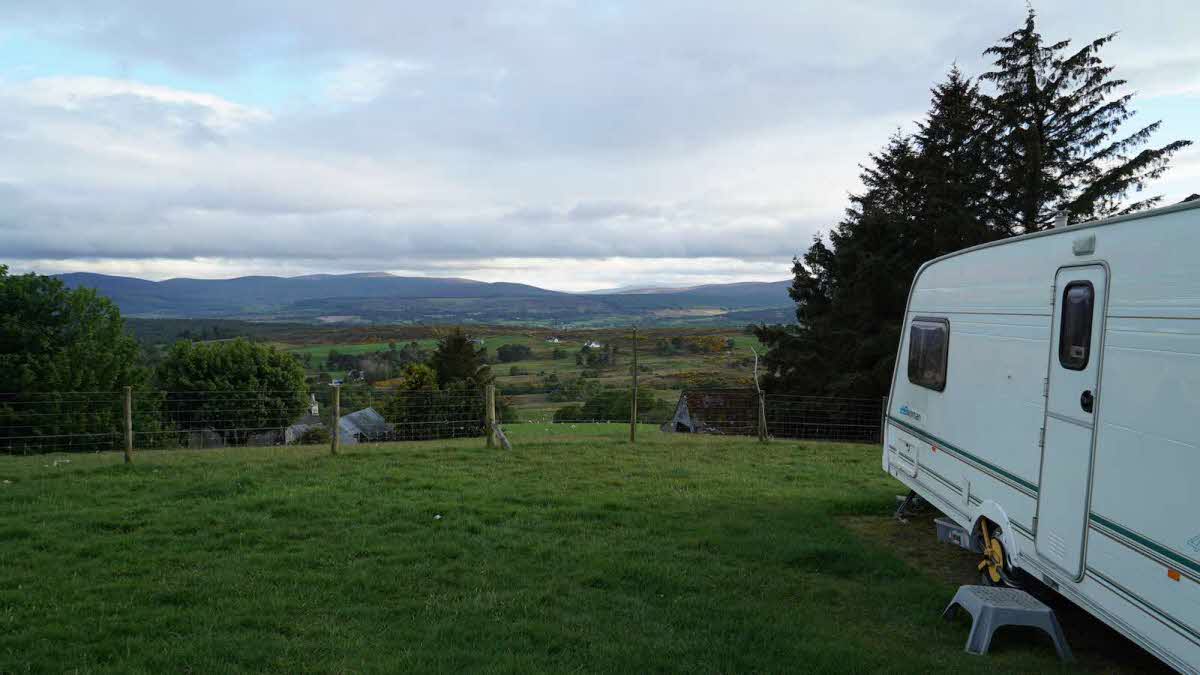
The sweeping views from the pitches are quite remarkable. I for one recommend a bout of mountain biking at the nearby Balblair Forest, although check ahead as the trails were awaiting maintenance at the time of writing.
Whatever you do, don’t miss the Falls of Shin. You might be lucky enough to catch the thrilling sight of salmon leaping as they try to navigate the tumbling waters.
I couldn’t think of a better place to round off this magical tour. I simply cannot wait until we can get out there and do it all again.
For more information on the NC500 route, including maps and specific guidance for those towing a caravan or driving a motorhome, please see northcoast500.com.


